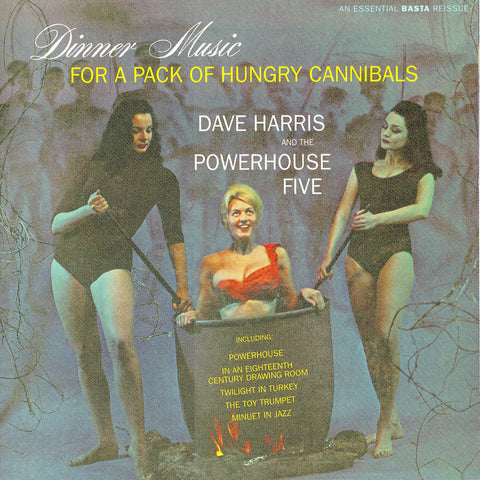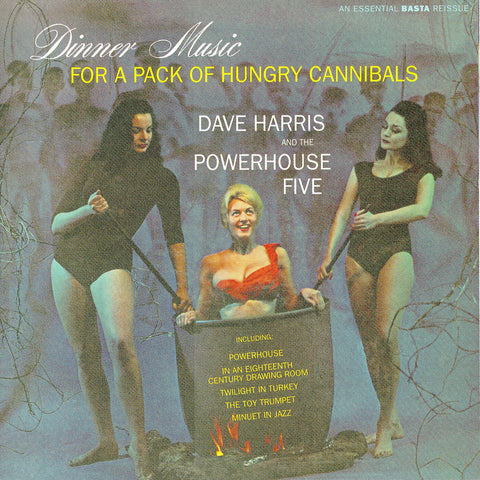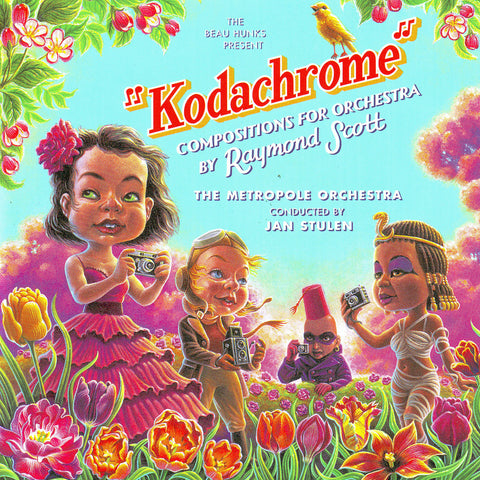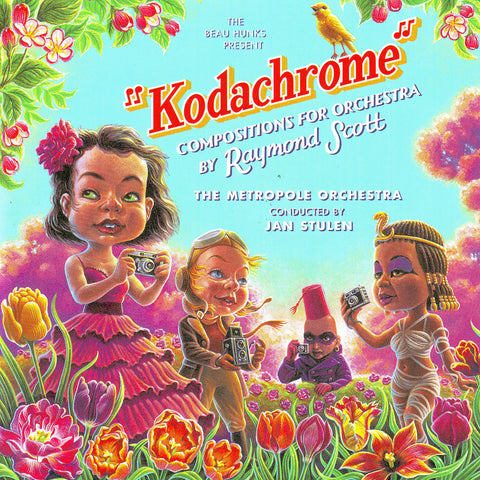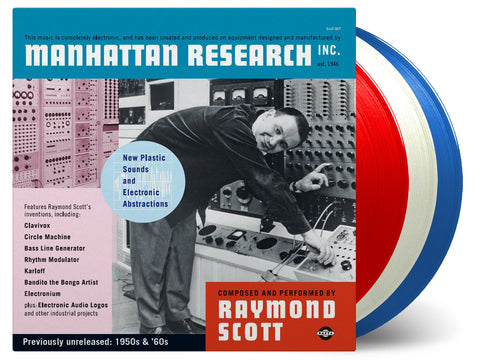
Raymond Scott - Manhattan Research, Inc. - 3x Vinyl Set - 2017
Basta Music
Basta MOVLP1855 | Released 2017
- 180 GRAM AUDIOPHILE VINYL
- 3 LP-SET / PRINTED INNERSLEEVES IN SLIPCASE
- INCLUDES 8 PAGE BOOKLET WITH FULL TRACK NOTES AND A HISTORICAL OVERVIEW
- FREE DOWNLOAD included
- LIMITED EDITION OF 1.000 COPIES ON RED (LP1), WHITE (LP2) & BLUE (LP3) COLOURED VINYL
- INDIVIDUALLY NUMBERED
“Raymond Scott was definitely in the forefront of developing electronic music technology and in the forefront of using it commercially as a musician.” --Robert Moog
Raymond Scott (1908-1994) was a renowned bandleader, composer and pianist from the 1930s to the 1950s. Many of his playful riffs, originally recorded from 1937 to 1939 by the Raymond Scott Quintette, are genetically encoded in every earthling, having been adapted by Warner Bros. music director Carl Stalling in over 100 Bugs Bunny and Daffy Duck cartoons. (These themes were later featured in The Ren and Stimpy Show.) The rediscovery of Scott’s original novelty jazz recordings led to a belated reappraisal of Scott’s timeless and long forgotten genius in the 1990s. These early works were covered by the Kronos Quartet, Don Byron, the Metropole Orchestra, the Beau Hunks Sextette, and countless other admirers. Scott’s 1937 rave-up “Powerhouse” has been nicked by Rush, They Might Be Giants, Devo, and countless others, as well as being used thematically in The Simpsons, Animaniacs, and Duckman.
During Scott’s career as a popular bandleader, there were reports of an alter ego -- inventor, professor in the lab coat, electronic music pioneer. But little of this work received public exposure. That changed in 1997 with Basta’s CD reissue of Scott’s 1963 Soothing Sounds for Baby (SSFB) trilogy. These albums, largely overlooked upon their original LP release, contained gentle, all-electronic sonic companions designed to calm and delight infants. In retrospect, however, Scott’s pioneering and little-heard explorations of synthesized rhythmic minimalism and low-key ambience foreshadowed the subsequent conjuring of Terry Riley, Phillip Glass, Kraftwerk and Brian Eno. Most of Scott’s works were performed on vacuum tube- and transistor-rigged music machines which he designed and built.
But SSFB couldn’t prepare the world for the exotic artifacts found on Basta’s 2-CD set, Manhattan Research Inc. MRI, first issued on Basta in 2000, contains 69 tracks recorded from 1956 to 1969—over two hours’ worth of Scott’s groundbreaking electronic work in adult dimensions. Forays into abstract musique concrete are heard alongside film soundtrack collaborations with a young pre-Muppet Jim Henson, and pan-galactic sonics seemingly beamed down from hovering UFOs. In addition, MRI presents some of the first TV and radio commercials to feature electronic music.
Now, Basta Music and Music on Vinyl present a new edition of MRI in a 3-LP set, including full track notes, a historical overview, and newly designed covers. The package contains an 8-page booklet, printed innersleeves and a free download coupon for the complete album. The first 1.000 copies of MRI are individually numbered and pressed on Red, White & Blue coloured vinyl.
The “personnel” on MRI consists of such Scott inventions as the CLAVIVOX, a keyboard Theremin that was later modified to produce an array of sounds similar to a synthesizer; the ELECTRONIUM, an instantaneous composition-performance console (conceived in the ‘50s, and developed in the ‘60s, used at MOTOWN in the ‘70s); polyphonic sequencers, including his “CIRCLE MACHINE”; the Rhythm Modulator; Bandito the Bongo Artist; and the Bass Line Generator; along with existing sound devices (e.g., the Ondioline and tone generators).

